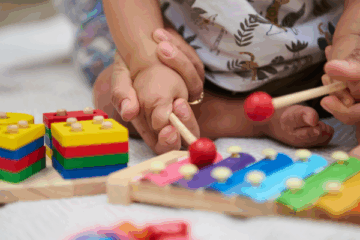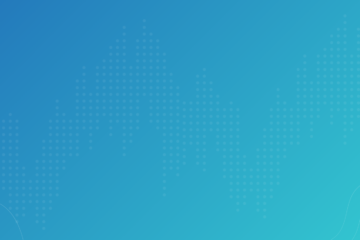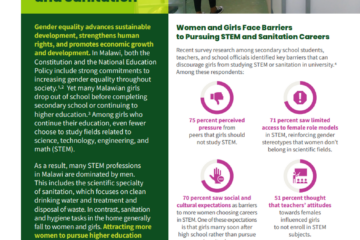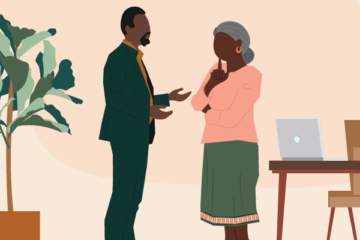
Trafficking in Persons: Myths, Methods, and Human Rights
Date
December 1, 2001
Author
(December 2001) In a 2001 report published by Amnesty International, a 27-year-old Ukrainian psychologist and social worker told of being trafficked to Israel. She believed she was being hired as a company representative. Her belongings were taken from her, and she was held in an apartment for two months where she was forced to work as a prostitute. “The conditions were terrible. One girl was kept to work in the basement for eight months. It was damp there, and she got tuberculosis as a result. Most of the girls had different diseases — venereal and others related to their reproductive organs. I do not wish even to my enemies to go through what we went through.”
Trafficking of humans involves moving men, women, and children from one place to another and placing them in conditions of forced labor. The practice includes forced prostitution, domestic servitude, unsafe agricultural labor, sweatshop labor, construction or restaurant work, and various forms of modern-day slavery. This global violation of human rights occurs within countries and across borders, regions, and continents.
According to a 2000 report released by the European Union’s Justice and Home Affairs Commission, women and girls are particularly vulnerable to trafficking because of the low status of women, poverty, and lack of educational and professional opportunities. Policymakers in many countries are recognizing the need to address these problems by promoting gender equality. Women who have greater opportunities for education, shelter, food, employment, access to legal and political systems, and freedom from violence will be less vulnerable to being trafficked.
The Majority of Trafficked People Are Women and Children From Asia
Because trafficking is illegal, it is difficult to find reliable estimates of the problem. However, those involved in combating trafficking agree that it is a large and growing practice. According to the Congressional Research Service (CRS) and the U.S. State Department, 700,000 to 2 million people, the majority of them women and children, are trafficked each year across international borders. Thirty-five percent are under the age of 18.
Estimates of People Trafficked per Year, by Region
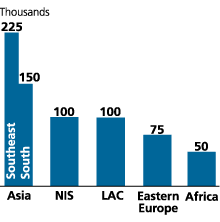
Source: Congressional Research Service,”Trafficking in Women and Children: The U.S. and International Response,” 98-649 C (May 10, 2000).
According to the CRS, the majority of these victims originate in Asia, with more than 225,000 arriving annually from Southeast Asia and more than 150,000 from South Asia. The former Soviet Union has become the largest new source of forced prostitution with 100,000 trafficked each year from the New Independent States. More than 75,000 are trafficked from Eastern Europe, 100,000 from Latin America and the Caribbean, and over 50,000 from Africa. Most of the victims are sent to large cities, vacation or tourist areas, or military bases in Asia, the Middle East, Western Europe, and North America.
Contrary to popular belief, traffickers are both male and female. Other common misperceptions are that all women are trafficked for forced prostitution, that trafficking and prostitution are the same, and that trafficked people are uneducated and from rural areas. Many trafficked people have completed primary school and some have attained secondary or post-secondary education. In Hong Kong, for example, many Filipinas in domestic servitude were once teachers and nurses. In Russia and Eastern Europe, many trafficked women hold college degrees and come from large cities.
Trafficking in People Is Big Business
With many countries cracking down on immigration, migrants rely more and more on trafficking networks to assist them, placing themselves in potentially abusive situations. Trafficking has turned into a big business; according to the CRS, trafficking in people represents the third largest source of profits for organized crime after drugs and guns, generating billions of dollars each year. Organized crime groups operating within and across borders often run trafficking networks. These networks are structured, organized, well-funded, and operated beyond the reach of law enforcement. Some traffickers are individuals or small groups that traffic people for specific purposes. Husband-wife teams often traffic women in domestic servitude and keep them in slavery-like conditions for years. Traffickers can be friends, family members, or neighbors.
Traffickers use a wide range of methods to move their victims. Some use word-of-mouth and personal connections to attract people who want to migrate abroad to find employment. In the cases of children, the use of adoption procedures has also been noted. Looking more specifically at trafficking in women, the recruitment takes various forms, including advertising in newspapers or through the use of marriage bureaus. While some trafficked women know they will work as prostitutes, they do not know that they may be kept in slavery-like conditions where they will be unable to escape from their exploiters.
Often, women are promised secure employment. According to the United Nations’ Integrated Regional Information Network for West Africa, Office for the Coordination of Humanitarian Affairs and the Nigerian newspaper This Day, in July 2001, an eight-man syndicate in Lagos allegedly offered 35 teenage girls between 20,000 naira and 200,000 naira (US$178 and US$1,779) to take “good” jobs in Europe. After being recruited, the girls typically faced long, difficult journeys from Nigeria to Guinea via Mali. In Mali, they were sold to other syndicates that transported them to Europe (generally via Italy and Spain) where they were forced into prostitution upon their arrival.
Traffickers typically maintain subservience through debt-bondage, passport confiscation, physical and psychological abuse, rape, torture, threats of arrest and deportation, and threats to the trafficked person’s family. Victims often find themselves cut off from the outside world, unable to speak the local language, and without identification or documentation. In extreme cases, the people do not know where they are. Consequently, it may be difficult to find help. In other cases, trafficked people fear the police because the law enforcement system is, or is perceived to be, corrupt or because they fear immediate deportation. Trafficked people often are afraid to return to their country of origin because of remaining smuggling debt, fear of public humiliation upon disclosure of the work that they performed, and possible further victimization of the victims as well as their families.
Trafficked People Often Suffer From Multiple Health Problems
Trafficked people often suffer from a multitude of physical and psychological health problems. Women are specifically vulnerable to reproductive and other gender-specific health problems in trafficking situations as they have little or no access to reproductive health care. These problems include lack of access to birth control, constant rapes, forced abortions and contraceptive use, lack of regular mammograms and Pap smears, and other health issues. Women in domestic servitude are subject to rape and other physical abuse, while women in forced prostitution suffer increased risk of sexually transmitted infections, including HIV/AIDS, repetitive stress injuries, and back problems. Moreover, most trafficked persons suffer from post-traumatic stress and, because of constant physical and psychological abuse, exhibit symptoms associated with survivors of severe trauma and torture.
An article on June 18, 2001, in the Hong Kong iMail recounted the story of an employer who trafficked an Indonesian woman into the city and forced her to work as a domestic servant. She beat the woman with a wooden brush until it broke, burned her neck with an iron when she fell asleep, never allowed her a day off, forced her to work at the employer’s house and watch factory, and paid her the equivalent of HK$200 (US$26) per month rather than the legal minimum wage of HK$3670 (US$470) per month. The Hong Kong employer was sentenced to 22 months in jail for abusing the woman.
Poverty, Unemployment, and Lack of Education Are Root Causes of Trafficking
To reduce the number people trafficked worldwide governments, nongovernmental organizations (NGOs), and others are tackling some of the root factors that encourage the practice. Poverty, unemployment, and lack of education and access to resources are driving forces as people take risks to improve their living conditions.
Trafficking for forced labor is being addressed as a human rights issue, rather than an immigration problem. Historically, trafficked people, particularly those who were not trafficked for forced prostitution, have been treated as criminals and as illegal immigrants. As such, they have been arrested and deported, sometimes even prosecuted for entering a country illegally or holding fake travel documents. Their traffickers may have been convicted of alien smuggling, but were rarely held accountable for the numerous human rights violations that accompany trafficking, including servitude, slavery, rape, and physical and psychological abuse.
Countries are being urged to protect the human rights of trafficked people by treating them as victims of crimes rather than as criminals. In Israel, according to Human Rights Watch, an international human rights organization, the government continues to regard trafficked women as criminals and “illegal aliens,” housing them in prisons where they are more vulnerable to human rights abuses. This occurs despite legislation making the buying and selling of human beings for prostitution a criminal offense.
To improve the treatment of those who have been trafficked, efforts are being made to train law enforcement, immigration agents, attorneys, and others to identify and assist trafficked persons. Increasingly, governments are working to strengthen law enforcement and effective sentencing of traffickers. This includes national, regional, and international efforts to prosecute organized crime groups and others that profit from global trafficking.
Trafficking Is Prohibited Under Several Human Rights Treaties
Trafficking is prohibited under several international human rights treaties including the United Nations (UN) Supplementary Convention on the Abolition of Slavery, the Slave Trade, and Institutions and Practices Similar to Slavery. The UN Convention on the Elimination of All Forms of Discrimination against Women calls for all parties to take measures “to suppress all forms of traffic in women and exploitation of prostitution of women.” Countries that have ratified these treaties are working to integrate the commitments of these conventions into national legislation.
With passage of global antitrafficking legislation, the UN Protocol to Prevent, Suppress and Punish Trafficking in Persons, Especially Women and Children, Supplementing the United Nations Convention Against Transnational Organized Crime, adopted by the UN General Assembly in November 2000, trafficking is increasingly being recognized as a serious international problem. As of December 2001, according to the UN, 101 countries had signed the protocol and four had ratified it. Before it can take effect, the protocol and the convention must each be ratified by 40 countries.
Combating trafficking involves national and international cooperation among NGOs, social agencies, and judicial, law enforcement, and migration authorities. Together these groups can limit the ability of traffickers to operate freely and can provide options to potential victims to prevent them from being trafficked. They can also influence legislation, policies, and programs to enable governments to penalize traffickers and to aid victims.
Trafficking Flows Within and From Africa
| Origin Countries | Destination Countries |
|---|---|
| Ghana | Nigeria, Cote d’Ivoire, Italy, Belgium, Netherlands, Lebanon, Libya, USA |
| Nigeria | Italy, Belgium, Netherlands |
| Ethiopia | Middle East, Gulf states |
| Mali | Cote d’Ivoire, Nigeria (children), Saudi Arabia, Kuwait (domestic labor) |
Source: International Organization for Migration, Trafficking in Migrants, no. 23 (April 2001).
Trafficking Flows Within Southeast Asia
| From | To | Type |
|---|---|---|
| Vietnam (northern regions) | China | Marriage |
| Vietnam | Taiwan | Marriage |
| Vietnam | Cambodia | Sex industry |
| Cambodia | Internal | Sex industry |
| Cambodia (north, northwest) | Thailand (children and women) | Primarily begging, also sex industry and domestic labor |
| Cambodia | Taiwan, Singapore | Sex industry, domestic |
| Thailand | Internal | Sex industry |
Source: International Organization for Migration, Trafficking in Migrants, no. 23 (April 2001).
Trafficking Flows in South Asia
| From | To | Type | Scale |
|---|---|---|---|
| Nepal | India | Sex industry | 5,000-7,000 women and girls/year |
| Bangladesh | India | Sex industry | Of 500,000 prostitutes in India, an estimated 13,500 are Bangladeshi |
| Bangladesh | Pakistan | Sex industry | 4,500 women and children/year; 200,000 over 10 years |
| Bangladesh | Middle East | All | 200,000 women and children over last 20 years; 3,397 children (1,683 boys) in last 10 years |
| Sri Lanka | Internal | Children: begging, labor, sex industry, child soldiers | Affects 100,000 children in Sri Lanka under age 16 |
| Sri Lanka | Internal | Unclear; some sex industry, domestic labor | 2,000-3,000 children/year |
Source: International Organization for Migration, Trafficking in Migrants, no. 23 (April 2001).
Trafficking Flows in Central Asia
| From | To | Scale | Returns | Type | Recruitment |
|---|---|---|---|---|---|
| Kazakhstan (southern) | Either by charter flight or regular flight to United Arab Emirates | For all of Kazakhstan, extrapolating from one known case of 50 women trafficked from city of 150,000: 5,000 women in 1999 | All of Kazakhstan: in 1999, 245 from Greece, 21 from United Arab Emirates, 16 from Turkey | Sex industry | Promises of jobs |
| Kazakhstan (northern) | By train to Moscow and with falsified Russian passports to Greece and other locations | Sex industry | Promises of jobs | ||
| Kyrgyzstan | Within Commonwealth of Independent States (37%), Middle East, Turkey; transit via Kazakhstan and Russia | 4,000 (IOM/OSCE* estimate) | Via Kazakhstan and Russia | Sex industry | |
| Tajikistan | Middle East, Ukraine, Kyrgyzstan | At least 20 known cases in 2000 |
* International Organization for Migration / Organization for Security and Cooperation in Europe
Source: International Organization for Migration, Trafficking in Migrants, no. 23 (April 2001).
Melanie Orhant has been active in the antitrafficking movement for 10 years. She is a law student at American University, Washington College of Law.
For More Information
Visit the Stop-Traffic listserve at http://www.friends-partners.org/lists/stop-traffic/1999/thread.html, and review the archive of articles. Stop-Traffic is an open, facilitated, international electronic list funded by the Women’s Reproductive Health Initiative of the Program for Appropriate Technology in Health.
Congressional Research Service, “Trafficking in Women and Children: The U.S. and International Response,” http://fpc.state.gov/documents/organization/9107.pdf
Human Rights Watch, “World Report 2001: Women’s Human Rights — Trafficking”: www.hrw.org/wr2k1/women/women5.html
International Human Rights Law Group, “Trafficking in Human Beings: The Slavery That Surrounds Us”: www.usinfo.state.gov/journals/itgic/0801/ijge/gj05.htm
International Organization for Migration: www.iom.int
Box
Trafficking or Smuggling — What Is the Difference?
The media, nongovernmental organizations (NGOs), governments, and others have used the terms “smuggling” and “trafficking” interchangeably: They actually describe two separate phenomena. If a person hires an individual or a criminal organization for assistance in moving from one country to another, then that person has been smuggled. Upon arrival at the destination, the business relationship ends, and the smuggler and the individual go their separate ways. In cases of trafficking, however, the association continues, often becoming exploitive and violent.
In some cases, smuggling turns into trafficking. Many people use organized criminal groups to help facilitate movement (smuggling), only to learn upon arrival in the destination country that the fee has increased, their passports are taken away, or they are raped and forced to work (trafficking). Others who arrange to be smuggled to another country and agree to specific types of labor — such as sex work, construction work, or domestic work — may find that they are living and working in slavery-like conditions. In some cases people know that they are going to work in brothels or sweatshops, but certain undisclosed labor conditions including slavery-like conditions, beatings, or rapes are forced upon them. On the other hand, many women voluntarily migrate abroad to work in the sex industry and may not end up in exploitative situations. However, those who end up exploited and abused need protection and assistance.

